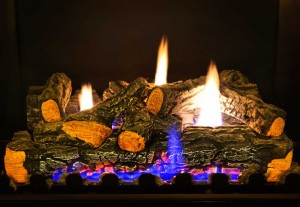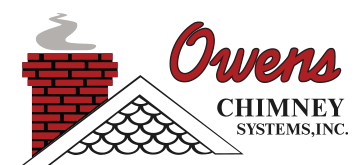Gas log fireplaces have become very popular due to their mess-free qualities and convenience of operation. Simply flip a switch or use a remote control to “turn on” the fireplace and receive instant warmth and ambiance. Gas logs feature either yellow flames that must be vented or higher-heat blue flames that may be used with a vent-free system.

Fireplaces fueled by propane or natural gas have several benefits to other types of fireplaces aside from convenience. Most noticeable is the fact that they do not produce soot. Users can enjoy a flame emitting from realistic-looking logs without the worry of soot staining walls, ceilings, and furniture. Allergy sufferers are not subjected to smoke that can irritate the nose or throat.
Though soot generation is not an issue, the fuel does leave some corrosive deposits in the chimney. Acids generated by burning propane or natural gas can damage the interior of a chimney without creating any external symptoms of an issue. Modern appliances like these are high-efficiency, which can reduce flue temperatures, resulting in water condensation or incomplete combustion.
A cool chimney provides an environment for water vapor to condense. Most people do not realize that when a hydrocarbon such as gas combusts, water vapor and carbon dioxide are the main results. A high-efficiency gas fireplace robs heat from the chimney, allowing corrosive, acidic water vapor to condense in the area. The dilute acid eats away at the mortar and brick from the inside.
Incomplete combustion results when the chimney is too cool to create an adequate draft. When an insufficient amount of combustion air is pulled into the appliance, efficiency suffers. In addition, carbon monoxide may be produced and may not be exhausted safely from the chimney due to a weak draft. This can endanger the lives of the home occupants.
